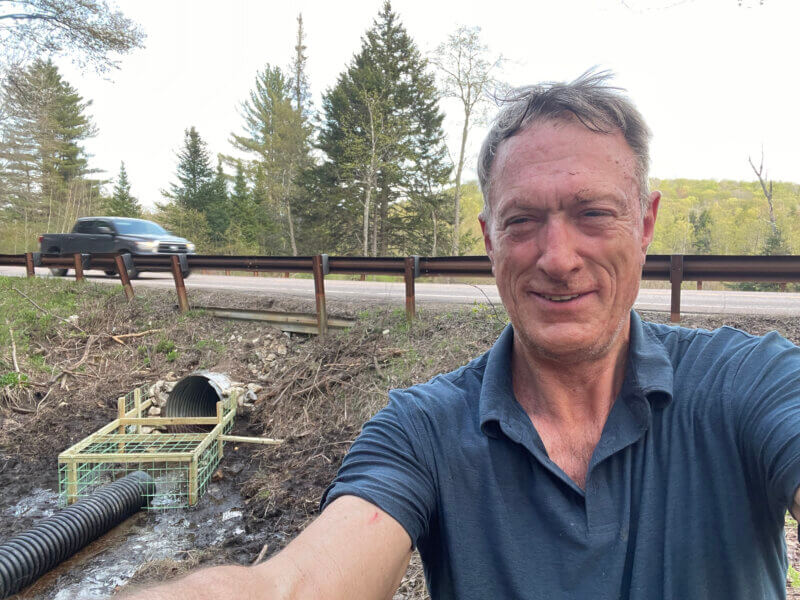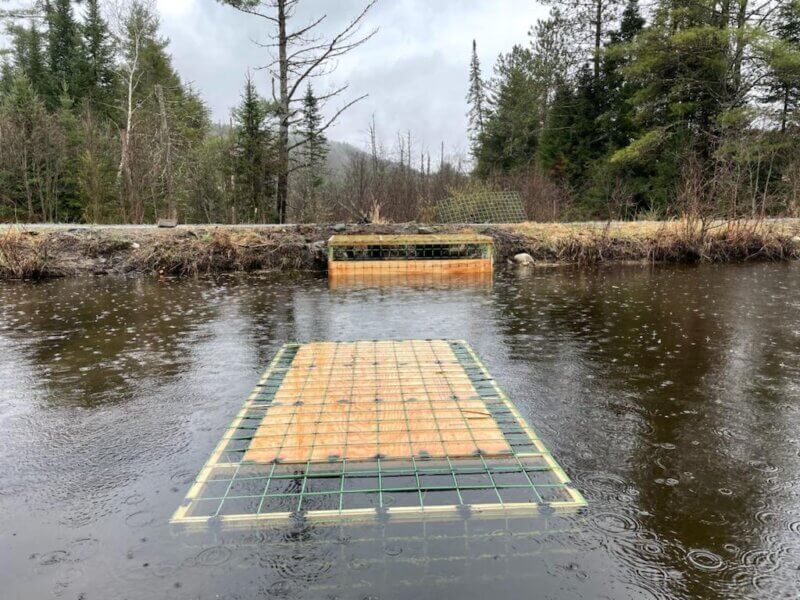Saving roads while saving beavers
The Charlotte Park and Wildlife Refuge Oversight Committee hosted a meeting of road commissioners and a couple of town managers in early June at the Charlotte Town Hall to talk about ways of protecting road culverts while protecting beavers.
Traditionally, when a culvert was clogged by beaver dams and the road began to flood, a trapper was called to kill the offending beavers. Then, the road commissioner would unclog the culvert.
Since there aren’t many suitable sites for beavers, eventually other beavers would come to the site and do their own dam building.

Skip Lisle, the inventor of the Beaver Deceiver, at work on a site in the Green Mountains.
Again, the road crew and the trapper would be called to unplug the culvert and kill the culvert culprits. Especially if the culvert is long and machinery can’t be used to remove the dam material, it can mean a lot of work. This can be a very labor-intensive and beaver-insensitive project.
At the gathering of almost 20 interested road maintainers from Charlotte and around the state, Skip Lisle, an expert on beaver co-existence strategies, gave a talk on how to build exclusion and dam leveling devices and the value of wetland habitat. Lisle understands that roads must be maintained and ponds have to be kept at levels that don’t flood roads, homes or other human structures.
He has been interested in beavers for at least three decades. During his master’s work in wildlife management, Lisle worked on beaver baffles and flow-control devices to deal with beaver dam building on Penobscot lands. Out of his research, Lisle invented the Beaver Deceiver and started manufacturing the devices in 1995.
The beaver deceiver is an exclusion device of wood, wire and pipe that allows water to flow through the middle of a beaver dam. Beavers are able to build their dams, but aren’t able to plug them. Beavers are probably not even aware that water is flowing through their dam when a beaver deceiver is installed in it.
Every site is unique and requires its own structural design to meet the needs of the site, Lisle said.
A maintenance crew from the Rutland area described a huge beaver-created wetland with roads crossing it that they were happily surprised to find prevented flooding during Hurricane Irene. The series of beaver dams and ponds in these wetlands slowed the flow of water, expanded the pond area, allowed time for the water to be absorbed into the underground water. This road crew wants to keep the beavers but would like Beaver Deceivers to keep their culverts open.

Charlotte road commissioner, Hugh Junior Lewis worked with the Charlotte Park and Wildlife Refuge Oversight Committee when beavers started clogging a culvert on Greenbush Road three years ago. He cleared the culvert and gave the group time to work out a plan.
Lisle helped Charlotte by building an exclusion device to protect the culvert, allowing Holmes Creek to continue to flow. This has been working very well.
At the Charlotte Park and Wildlife Refuge he’s also showed how to fence trees you don’t want the beavers to fell. Now, there are three major dams on Holmes Creek in the refuge and about seven smaller ones.
The Vermont Land Trust has been to the site and done drone photography of the wetland complex. The organization wants to replicate the wetland restoration work done in the park to conserve other damaged wetlands.
It is a great thing to restore a wetland by letting the beaver do the work.
(Susan Smith is co-chair of the Charlotte Park and Wildlife Refuge Oversight Committee.)

